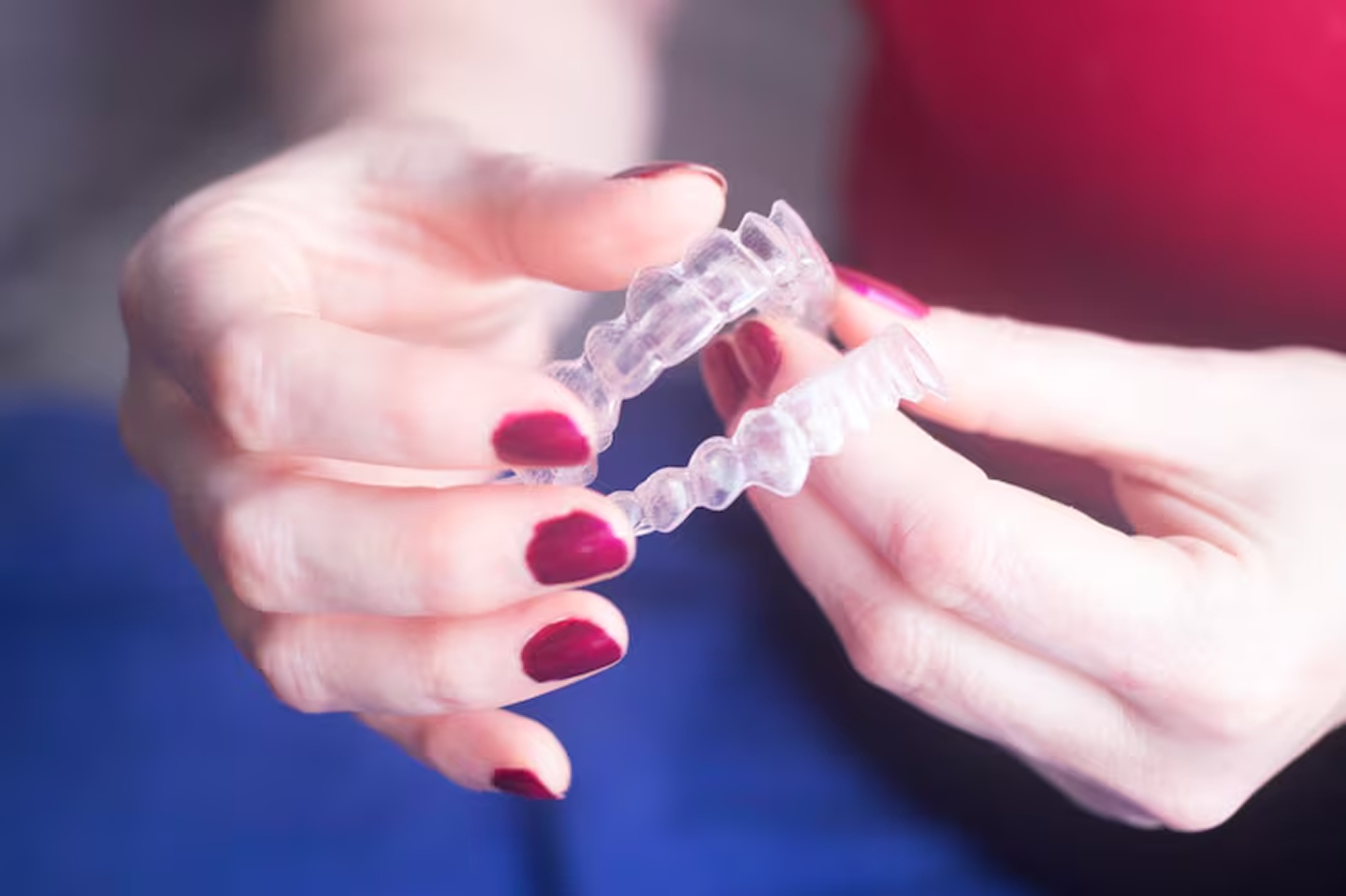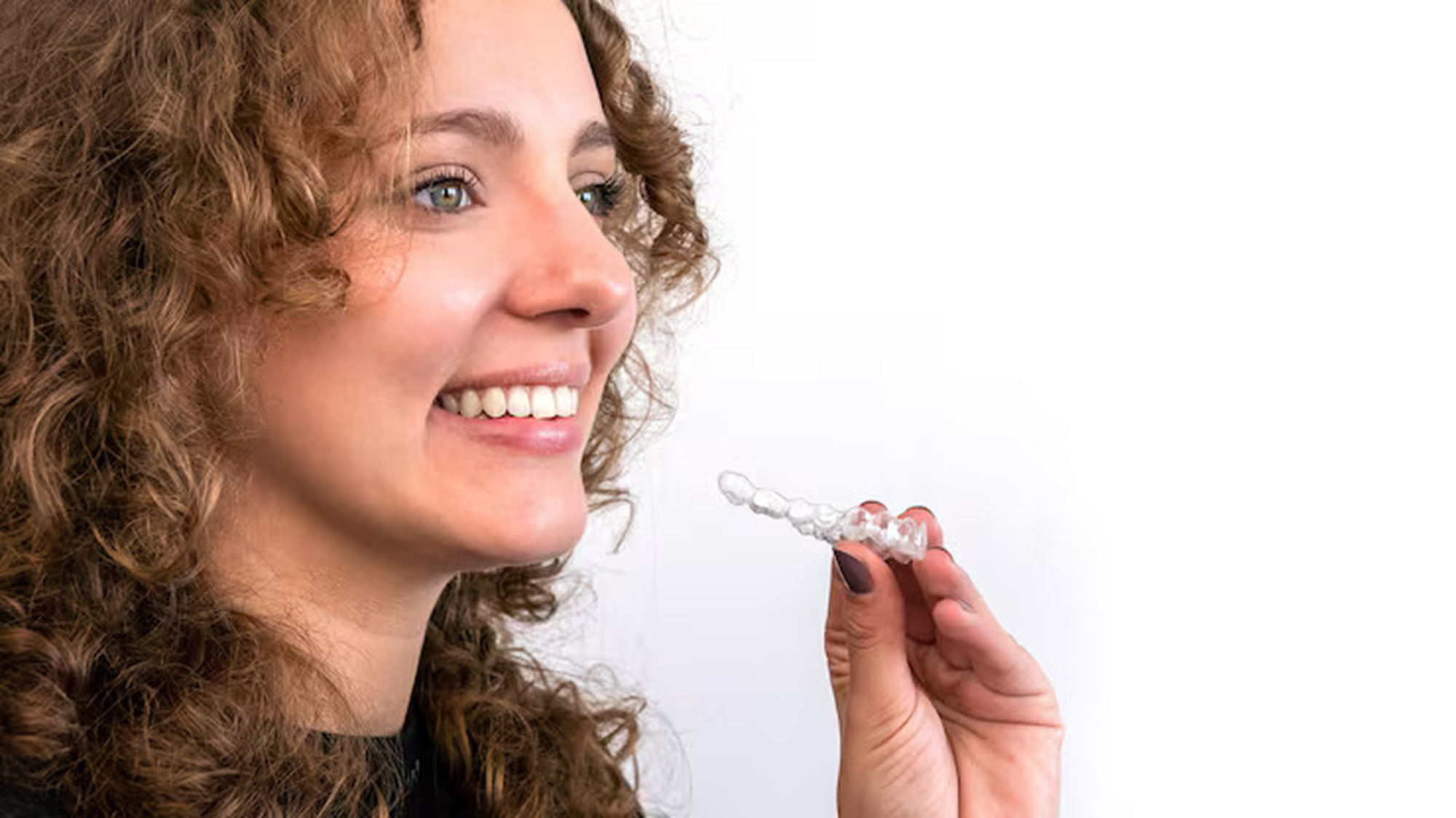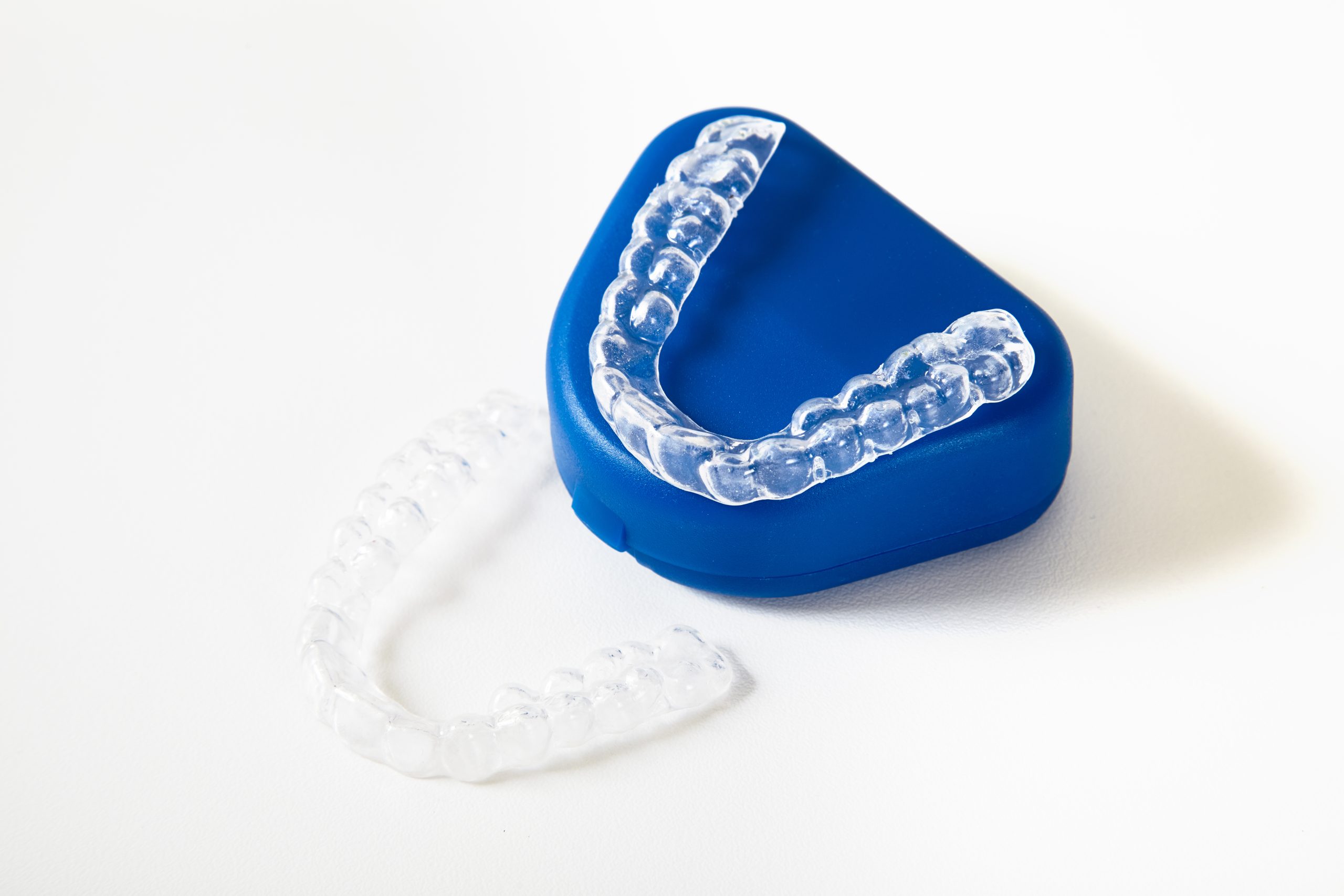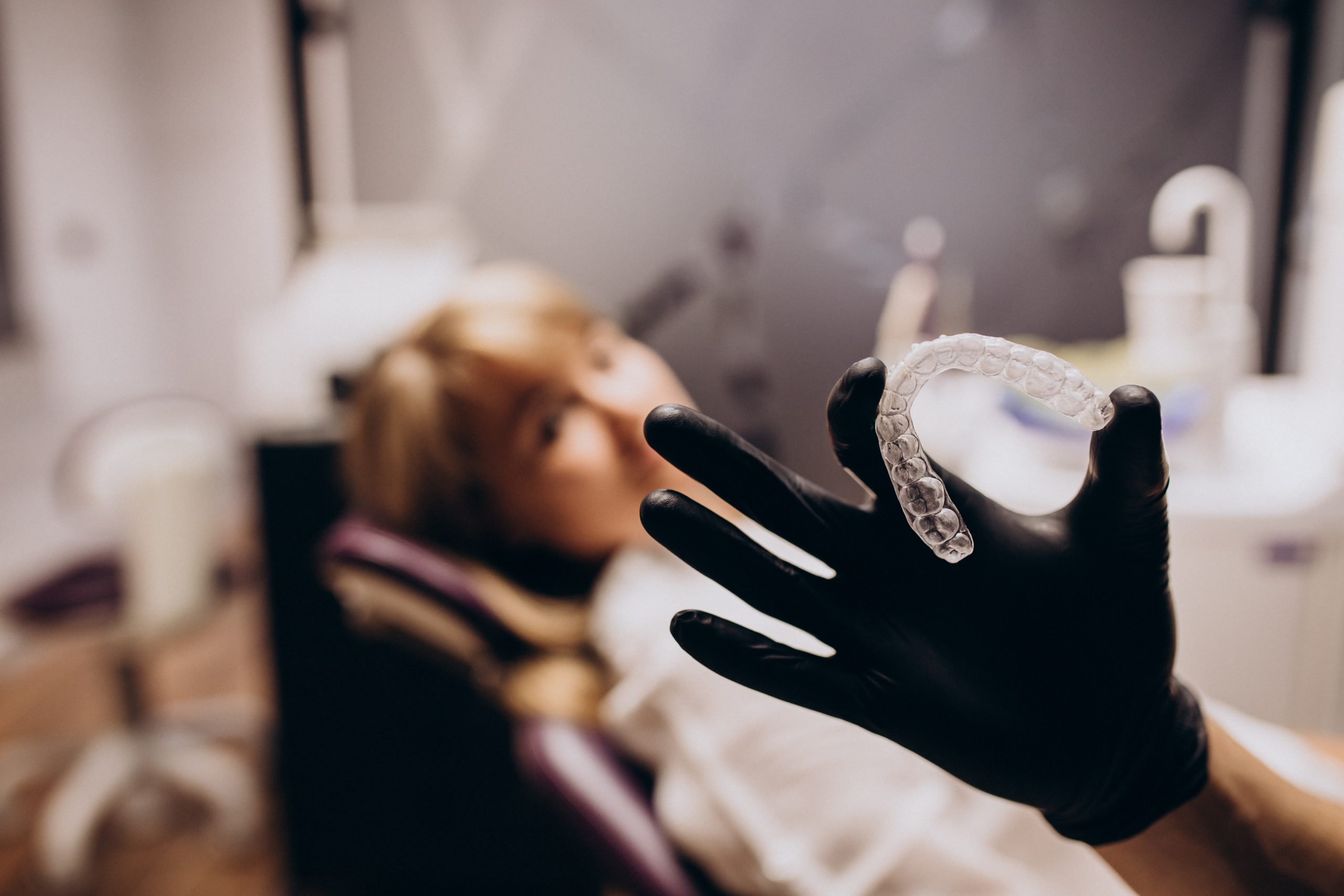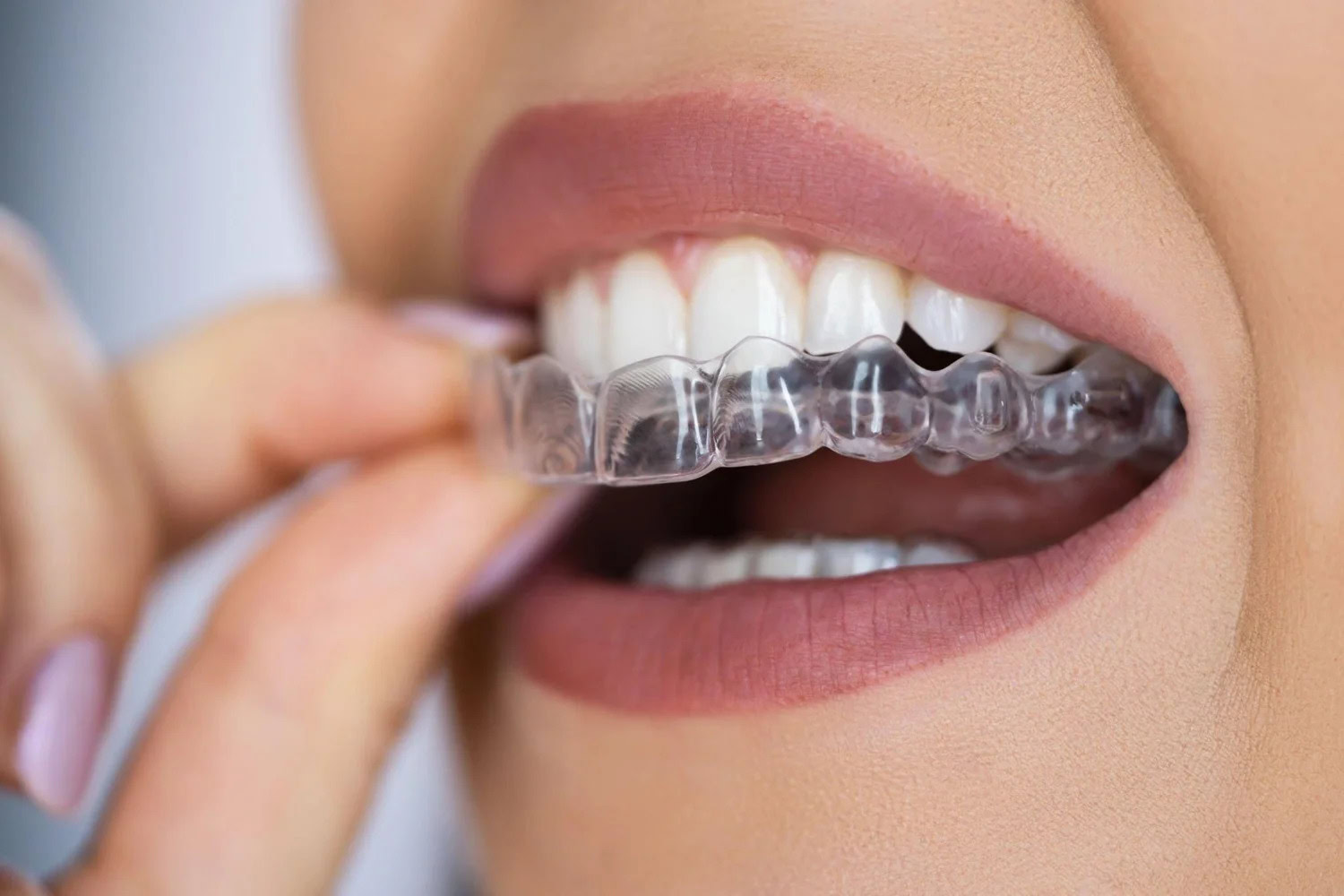Invisalign is a type of clear aligner system used in orthodontic treatment to gradually guide teeth into a new position. Unlike traditional braces or metal braces, aligners are designed to be removable and discreet. Each person follows a custom treatment plan, and results can vary depending on individual factors.
A common question about Invisalign treatment is how long Invisalign results last once the active stage is completed. Teeth shifting can occur over time after both aligners and braces, which is why a retainer is often part of the plan. Age, oral hygiene habits, bite type, and how consistently retainers are worn may all affect long-term outcomes.
In this blog, we’ll explore the factors that influence how well teeth remain in their new position after Invisalign. We’ll look at the role of wearing retainers, the connection between oral health and alignment, and why regular dental check-ups are important. By considering these factors, you’ll have a clearer understanding of long-term stability and what can reduce the risk of relapse.
Contents Navigation
- Summary of the Content:
- How Invisalign Treatment Supports Long-Term Results
- Typical Longevity of Invisalign Results
- Why Retainers Are Essential
- Factors That Influence How Long Treatment Results Last
- Why Good Oral Hygiene Helps Maintain Alignment
- Signs of Teeth Shifting After Invisalign Treatment
- Follow-Up Care With an Invisalign Dentist
- The Value of Regular Dental Check-Ups After Treatment with Invisalign Clear Aligners
- The Value of Regular Dental Check-Ups After Treatment with Invisalign Clear Aligners
- Final Thoughts
Summary of the Content:

- Invisalign treatment lays the groundwork for straighter teeth, but stability depends on consistent care after treatment.
- Results may remain stable for many years if retainers are worn and oral health is maintained, though natural changes still occur.
- Retainers are commonly recommended after Invisalign because they can reduce the chance of relapse as natural tooth movement occurs.
- Options include fixed wire retainers and removable designs, such as Hawley or Vivera aligners, each with different roles.
- Many people need to wear a retainer in some form long-term, although daily wear time usually decreases gradually.
- Age, oral habits, gum health, bone condition, and overall oral health may influence how long Invisalign results last.
- Good oral hygiene habits, including brushing, flossing, and professional cleaning, help keep gums healthy and lower the risk of dental issues.
- Regular dental check-ups with an Invisalign dentist allow monitoring of retainers, assessing tooth alignment, and giving timely professional advice.
How Invisalign Treatment Supports Long-Term Results
Invisalign treatment is designed to gradually guide teeth into a straighter position through a series of custom-made clear aligners. This approach may influence both appearance and function, though outcomes vary between individuals. The active stage of treatment is only the starting point of the Invisalign journey.
Once the aligner phase ends, teeth can have a natural tendency to shift towards their original position. Retainers are often recommended to help reduce this movement. With consistent care, the changes from Invisalign treatment are more likely to remain stable over time.
Ongoing maintenance is important for helping results remain stable. Wearing retainers as prescribed, practising good oral hygiene, and attending regular dental check-ups all play a role. Invisalign treatment provides the initial change, while long-term stability relies on continued care and healthy habits.
Typical Longevity of Invisalign Results
Invisalign results can remain stable for a considerable period, though this depends on consistent aftercare and individual factors. Teeth may shift naturally with age, even after orthodontic treatment. Retainers are commonly recommended as part of ongoing care to help reduce this movement.
Good oral hygiene may contribute to the stability of alignment over time. Practices like brushing, flossing, and attending regular dental check-ups help maintain gum and bone health. Conditions like gum disease or tooth decay can increase the chance of further changes.
Lifestyle and oral habits may also influence longevity. Grinding, clenching, or inconsistent retainer use can place pressure on teeth and affect alignment. Invisalign results are often considered long-lasting, but they do not stay the same, since gradual movement is part of the normal ageing process.
Why Retainers Are Essential
After Invisalign treatment, teeth may naturally shift back towards their original position. Retainers are commonly recommended as part of long-term orthodontic care to help reduce this movement. They form a key part of maintaining the stability of alignment achieved during treatment.
Types of Retainers After Invisalign
- Retainers are generally grouped into two categories:
fixed and removable. Both are intended to lower the likelihood of relapse by helping teeth remain in their new position after Invisalign treatment. The choice between them depends on the treatment plan, lifestyle, and professional dental advice. - Fixed retainers:
These retainers use a thin wire that is bonded to the back of the front teeth to keep them in position. They work continuously in the background and may help reduce the chance of teeth shifting, but they require careful brushing and flossing to prevent plaque and food particles from building up. - Removable retainers:
These retainers can be taken out for eating, brushing, and flossing. When worn consistently as prescribed, they may help limit relapse by maintaining alignment. They can be removed during cleaning, which may make oral hygiene routines more straightforward.
Removable retainers come in several designs, with Hawley and Vivera retainers being widely used options that differ in appearance and materials.
- Hawley retainers:
Made of acrylic with a thin metal wire across the front teeth, these are durable and adjustable if minor changes are needed. They may reduce the risk of relapse by applying gentle pressure to hold teeth in place. Because the wire is visible, some people consider them less discreet than clear alternatives. - Vivera retainers:
Made of clear plastic, these resemble Invisalign aligners in appearance. They are designed to be less visible than wire-based retainers, which some people find preferable. Like other retainers, they may help limit relapse by maintaining alignment after treatment.
How Long Retainers Should Be Worn
The length of time retainers are needed varies between individuals, but many people continue to use them in some form after the active Invisalign stage. Wear time usually decreases over the years, yet ongoing use is considered important to help limit the natural tendency of teeth to shift. Dentists often provide tailored instructions as part of an individual treatment plan.
- Initial wear:
Retainers are often worn full-time in the first few months following Invisalign treatment. This stage allows the teeth and surrounding tissues to adjust to their new position. The duration of this phase depends on the treatment plan and the individual. - Transition phase:
After the early months, many people reduce wear to mostly night-time use. This gradual shift continues to provide stability while fitting more easily into daily routines. The length of this stage can vary and is usually guided by professional advice. - Long-term wear:
Some level of long-term retainer use is often recommended, commonly at night. This extended wear may lower the likelihood of relapse, which can occur with age or changes in oral health. The frequency and schedule differ from person to person.
Inconsistent use of retainers can allow teeth to move gradually from their intended position. Even mild changes may make the retainer feel tight or uncomfortable, which can indicate that movement is occurring.
Regular dental check-ups are also important for monitoring retainer condition and tooth position. Over time, adjustments or replacements may be required. Ongoing monitoring also helps identify oral health issues, such as gum disease or cavities, which may affect stability.
Factors That Influence How Long Treatment Results Last
The stability of Invisalign results depends on a combination of biological and behavioural factors. Teeth are not anchored for life, and some movement may occur naturally as time passes. Understanding these influences shows why ongoing care can play a role in orthodontic treatment.
Age and Natural Tooth Movement
Tooth movement can happen at any age due to natural changes in the mouth and jaw. Children, teenagers, and adults may all experience gradual shifts as part of normal development and ageing. These changes may also occur after orthodontic treatment, which is why periodic reviews can be useful.
As people age, changes in the gums and bone around teeth may contribute to gradual movement. Small gaps can appear, or mild crowding may occur near the front teeth. Regular dental check-ups provide opportunities to notice these changes early and consider management options.
Oral Habits and Lifestyle
Daily habits may influence how stable results remain after Invisalign. Some behaviours place pressure on teeth or affect oral health, which may increase the chance of movement. Examples include:
- Teeth grinding (bruxism):
Grinding places extra force on the teeth, which may contribute to gradual changes in alignment. A dentist may suggest a night guard if this habit is identified. - Clenching:
Persistent clenching can put pressure on the teeth and jaw. Over time, this may affect alignment and contribute to discomfort in the muscles or joints. - Inconsistent retainer use:
Skipping or forgetting to wear retainers may allow teeth to shift slowly from their intended position. Consistent use, as advised, is encouraged to promote stability. - Smoking or diet choices:
Smoking, frequent sugary drinks, or sticky foods may increase the risk of gum disease or decay. These conditions can indirectly influence how well alignment is maintained.
Dental Health and Bone Support
The condition of the gums and bone surrounding teeth also influences stability. If either is compromised, relapse or movement may be more likely. Key factors include:
- Gum health:
Conditions like gum disease may reduce the stability of teeth and increase the chance of shifting. Brushing, flossing, and professional cleaning are important for keeping gums healthy. - Bone density:
Adequate bone levels help teeth remain steady after orthodontic treatment. Loss of bone, which may occur with ageing or periodontal disease, can contribute to tooth movement. - Overall oral health:
Cavities and other dental problems may change bite function and influence stability. Regular dental check-ups help identify and address these issues early.
Why Good Oral Hygiene Helps Maintain Alignment
Oral hygiene plays a role in the long-term stability of Invisalign results. Healthy gums and teeth contribute to alignment that has been achieved through treatment. Without consistent care, conditions like gum disease or cavities may develop, and these can influence tooth movement.
The following practices are commonly recommended as part of everyday oral care and may help in maintaining alignment:
- Brushing:
Brushing twice daily with fluoride toothpaste removes plaque and food particles from the teeth and around retainers. Consistent brushing lowers the risk of cavities and helps keep the mouth clean, which is favourable for stability. - Flossing:
Flossing clears debris and bacteria between teeth that brushing alone may not reach. This habit lowers the risk of gum inflammation and contributes to conditions that may help maintain alignment over time. - Professional cleaning:
Regular dental visits allow removal of hardened deposits that are difficult to manage at home. These visits also give dentists the chance to assess gum health and detect issues early, which may assist in maintaining alignment.
Signs of Teeth Shifting After Invisalign Treatment
Even after Invisalign treatment, teeth may continue to move slightly over time. This movement is often gradual but can become more noticeable if retainers are not worn consistently or if oral health changes occur. Recognising early signs may encourage people to seek timely professional advice.
The following are common indicators that teeth may be shifting:
- Gaps reappearing:
Small spaces may develop again between teeth, especially in areas that were previously adjusted during Invisalign treatment. These gaps may indicate that alignment is beginning to change. - Tight or uncomfortable retainer:
If a removable retainer feels tighter than usual or does not fit properly, it may suggest that teeth have moved slightly. This is often one of the first changes people notice. - Mild crowding:
Teeth at the front, particularly the lower front teeth, may begin to overlap or crowd together. This may develop gradually and can sometimes be noticed during brushing or flossing. - Changes in bite:
Shifting can cause the way the upper and lower teeth meet to feel different. This change may affect chewing or create a sensation that the teeth no longer meet in the same way. - Visible rotation or tilt:
Individual teeth may begin to angle or rotate, creating a change in shape or appearance compared with how the teeth looked after treatment. This is often noticed when smiling or reviewing photographs.
If any of these changes are observed, it is advisable to consult a dentist. Early assessment may help limit further shifting and allow for discussion of whether options like adjustments or new retainers could be considered.
Follow-Up Care With an Invisalign Dentist
After Invisalign treatment, follow-up care is an important part of maintaining oral health and monitoring changes over time. These appointments are not only about checking retainers but also about reviewing how teeth and gums are adapting after treatment. They provide an opportunity to address questions, detect potential issues early, and discuss habits that may affect stability.
The role of an Invisalign dentist in follow-up care may include the following:
- Checking retainers:
Dentists can examine whether fixed or removable retainers are fitting appropriately and remain in suitable condition. They may also identify when adjustments or replacements could be helpful. - Reviewing tooth alignment:
Follow-up visits provide a chance to look for early signs of movement, such as gaps or crowding, and to consider whether further intervention may be appropriate. - Monitoring oral health:
Dentists may check for concerns like cavities, gum disease, or wear from habits like teeth grinding. These conditions can influence the stability of Invisalign results. - Discussing lifestyle factors:
Habits like smoking, frequent sugary drinks, or inconsistent retainer use may contribute to changes in alignment. Dentists can provide advice tailored to individual circumstances. - Planning long-term care:
Regular reviews may help determine whether retainers remain effective and what adjustments could benefit ongoing stability. These discussions may form part of an individualised treatment plan.
The Value of Regular Dental Check-Ups After Treatment with Invisalign Clear Aligners
When Invisalign treatment is completed, the journey does not end. Teeth can continue to move naturally, and other oral health issues may arise over time. Regular dental check-ups provide ongoing oversight, helping to detect changes early and offering opportunities to discuss care that may influence stability.
The role of regular dental check-ups after Invisalign treatment may include the following:
- Monitoring tooth alignment:
Dentists may look for early signs of movement, such as mild crowding or gaps. They can then consider whether adjustments to retainers or other measures might be helpful. - Assessing retainer condition:
Appointments provide an opportunity to check whether retainers are fitting appropriately and remain in good condition. Dentists may advise on replacements or adjustments if needed. - Professional cleaning:
Check-ups may include removal of plaque and tartar that are not always managed through home care alone. This process may also help reduce the risk of gum disease or cavities that could affect alignment. - Evaluating oral health:
Dentists may examine for conditions like gum inflammation, tooth decay, or wear from teeth grinding. Managing these issues promptly may lower the chance that they affect tooth position. - Providing ongoing guidance:
Regular visits allow discussion of lifestyle habits, such as smoking or frequent sugary drinks, which may contribute to oral health changes. Tailored advice may help reduce risks and guide habits that influence long-term stability.
The Value of Regular Dental Check-Ups After Treatment with Invisalign Clear Aligners
When Invisalign treatment is completed, the journey does not end. Teeth can continue to move naturally, and other oral health issues may arise over time. Regular dental check-ups provide ongoing oversight, helping to detect changes early and offering opportunities to discuss care that may influence stability.
The role of regular dental check-ups after Invisalign treatment may include the following:
- Monitoring tooth alignment:
Dentists may look for early signs of movement, such as mild crowding or gaps. They can then consider whether adjustments to retainers or other measures might be helpful. - Assessing retainer condition:
Appointments provide an opportunity to check whether retainers are fitting appropriately and remain in good condition. Dentists may advise on replacements or adjustments if needed. - Professional cleaning:
Check-ups may include removal of plaque and tartar that are not always managed through home care alone. This process may also help reduce the risk of gum disease or cavities that could affect alignment. - Evaluating oral health:
Dentists may examine for conditions like gum inflammation, tooth decay, or wear from teeth grinding. Managing these issues promptly may lower the chance that they affect tooth position. - Providing ongoing guidance:
Regular visits allow discussion of lifestyle habits, such as smoking or frequent sugary drinks, which may contribute to oral health changes. Tailored advice may help reduce risks and guide habits that influence long-term stability.
Final Thoughts
Invisalign results may remain stable for many years, though outcomes vary between individuals. Teeth can move naturally over time, so long-term maintenance is often part of treatment. Recognising this helps set realistic expectations after Invisalign.
Factors that may influence stability include consistent retainer use, good oral hygiene, and regular dental check-ups. These steps may reduce the likelihood of teeth shifting and allow potential concerns to be identified early. Ongoing care may contribute to the stability of alignment over time.
Professional advice is valuable for anyone who has completed Invisalign treatment. Enso Dental North Perth provides follow-up care that may include reviewing retainers, monitoring alignment, and offering guidance tailored to each person. Regular reviews with a dental team may assist in monitoring changes and planning long-term care.



